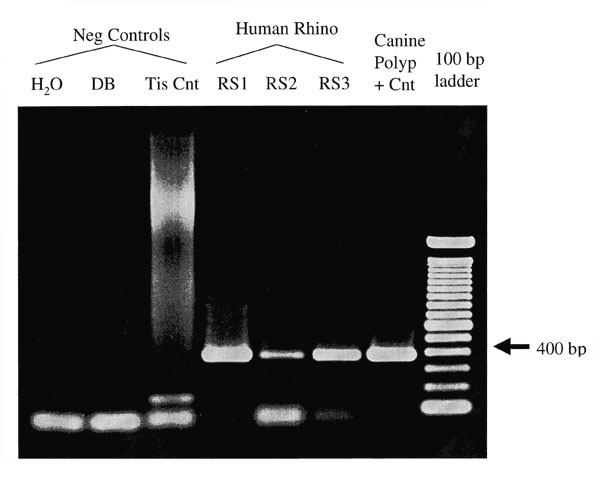Volume 6, Number 3—June 2000
Research
Rhinosporidium seeberi: A Human Pathogen from a Novel Group of Aquatic Protistan Parasites
Figure 3

Figure 3. Agarose gel electrophoresis of Rhinosporidium-specific PCR products. The specific amplification product is 377 bp. No amplification product is seen in the negative control samples consisting of water (reagent-only control), digestion buffer (DB), or lymph node tissue control (Tis Cnt). The human rhinosporidiosis samples (RS1-3) and the original canine nasal polyp show visible amplification products.
Page created: December 16, 2010
Page updated: December 16, 2010
Page reviewed: December 16, 2010
The conclusions, findings, and opinions expressed by authors contributing to this journal do not necessarily reflect the official position of the U.S. Department of Health and Human Services, the Public Health Service, the Centers for Disease Control and Prevention, or the authors' affiliated institutions. Use of trade names is for identification only and does not imply endorsement by any of the groups named above.